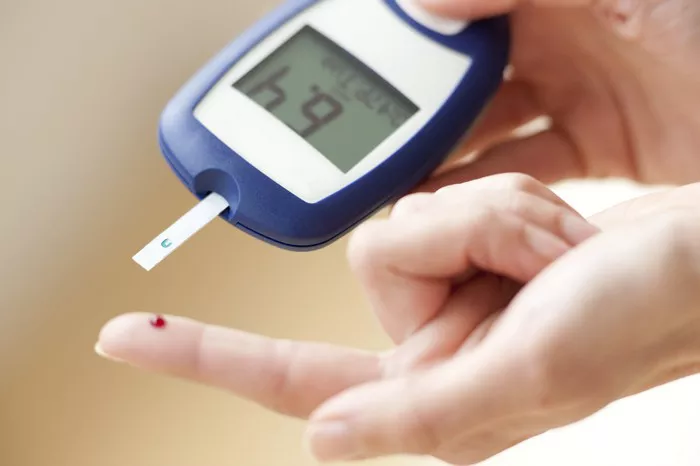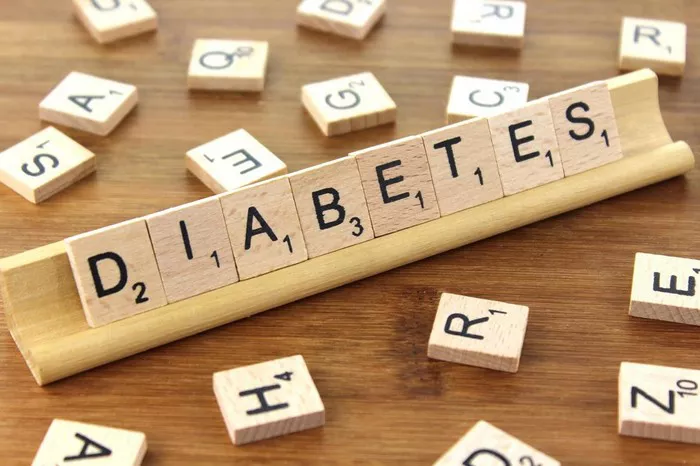Blood sugar levels are a critical indicator of health, particularly for individuals with diabetes. Maintaining these levels within a target range is essential to avoid both short-term and long-term health complications. In this comprehensive article, we will explore what constitutes dangerous blood sugar levels, the consequences of these levels, and strategies for managing blood sugar effectively.
What Are Blood Sugar Levels?
Blood sugar, or blood glucose, is the concentration of glucose present in the blood. Glucose is a vital source of energy for the body’s cells, derived from the food we eat. After a meal, carbohydrates are broken down into glucose, which then enters the bloodstream. Insulin, a hormone produced by the pancreas, helps cells absorb glucose for energy.
Normal Blood Sugar Levels
Normal blood sugar levels vary throughout the day, typically rising after meals and falling during fasting periods. For non-diabetic individuals, the following ranges are generally considered normal:
- Fasting blood sugar: 70-99 mg/dL
- Postprandial (after eating) blood sugar: Less than 140 mg/dL
- HbA1c (glycated hemoglobin): Less than 5.7%
Blood Sugar Levels in Diabetes
Diabetes is a condition characterized by impaired insulin production or utilization, leading to elevated blood sugar levels. There are two primary types of diabetes:
- Type 1 Diabetes: An autoimmune condition where the body’s immune system attacks and destroys insulin-producing cells in the pancreas.
- Type 2 Diabetes: A metabolic disorder where the body becomes resistant to insulin or does not produce enough insulin.
For individuals with diabetes, the target blood sugar levels are slightly higher than those for non-diabetics:
- Fasting blood sugar: 80-130 mg/dL
- Postprandial blood sugar: Less than 180 mg/dL
- HbA1c: Less than 7%
Dangerous Blood Sugar Levels: Hypoglycemia
Hypoglycemia, or low blood sugar, occurs when blood glucose levels drop below 70 mg/dL. This condition can be dangerous and requires immediate attention. Symptoms of hypoglycemia include:
- Shaking or trembling
- Sweating
- Rapid heartbeat
- Dizziness or lightheadedness
- Hunger
- Irritability or mood changes
- Confusion or difficulty concentrating
Severe hypoglycemia can lead to loss of consciousness, seizures, or even death if not treated promptly. Causes of hypoglycemia include excessive insulin administration, skipping meals, vigorous exercise, and certain medications.
Managing Hypoglycemia
To manage hypoglycemia, it’s crucial to recognize the symptoms early and take action:
- Consume Fast-Acting Carbohydrates: Ingest 15-20 grams of fast-acting carbohydrates, such as glucose tablets, fruit juice, or regular soda.
- Recheck Blood Sugar: After 15 minutes, recheck your blood sugar level. If it’s still below 70 mg/dL, consume another 15-20 grams of carbohydrates.
- Seek Medical Attention: If symptoms persist or worsen, seek medical attention immediately.
Preventive strategies include regular blood sugar monitoring, eating balanced meals, and adjusting insulin doses based on activity levels and food intake.
Dangerous Blood Sugar Levels: Hyperglycemia
Hyperglycemia, or high blood sugar, occurs when blood glucose levels exceed the target range. For individuals with diabetes, this is typically defined as:
- Fasting blood sugar over 130 mg/dL
- Postprandial blood sugar over 180 mg/dL
Hyperglycemia can be acute or chronic, leading to serious complications if not managed effectively.
Acute Hyperglycemia
Acute hyperglycemia can cause symptoms such as:
- Increased thirst
- Frequent urination
- Fatigue
- Blurred vision
- Headache
If blood sugar levels remain high for extended periods, it can lead to diabetic ketoacidosis (DKA) or hyperosmolar hyperglycemic state (HHS), both of which are medical emergencies.
Diabetic Ketoacidosis (DKA): Primarily affects individuals with type 1 diabetes and occurs when the body starts breaking down fat for energy, producing ketones. High levels of ketones can cause the blood to become acidic, leading to symptoms like:
- Nausea and vomiting
- Abdominal pain
- Rapid breathing
- Fruity-smelling breath
- Confusion or loss of consciousness
Hyperosmolar Hyperglycemic State (HHS): More common in type 2 diabetes, HHS is characterized by extremely high blood sugar levels without significant ketone production. Symptoms include:
- Extreme thirst
- Dry mouth
- Warm, dry skin
- High fever
- Drowsiness or confusion
- Seizures or coma
Both DKA and HHS require immediate medical intervention, typically involving intravenous fluids, insulin therapy, and electrolyte replacement.
Chronic Hyperglycemia
Chronic hyperglycemia can lead to long-term complications affecting various organs and systems, including:
- Cardiovascular Disease: Increased risk of heart disease, stroke, and hypertension.
- Neuropathy: Nerve damage causing pain, tingling, or numbness, particularly in the extremities.
- Nephropathy: Kidney damage leading to chronic kidney disease or kidney failure.
- Retinopathy: Damage to the blood vessels in the eyes, potentially resulting in vision loss or blindness.
- Peripheral Artery Disease: Reduced blood flow to the limbs, increasing the risk of infections and amputations.
Preventing Dangerous Blood Sugar Levels
Preventing dangerous blood sugar levels involves a multifaceted approach that includes lifestyle modifications, regular monitoring, and appropriate medical interventions.
Lifestyle Modifications
- Healthy Diet: Focus on a balanced diet rich in fruits, vegetables, whole grains, lean proteins, and healthy fats. Limit intake of refined carbohydrates, sugary foods, and processed snacks.
- Regular Exercise: Engage in regular physical activity, such as walking, swimming, or cycling, to improve insulin sensitivity and help regulate blood sugar levels.
- Weight Management: Maintain a healthy weight to reduce the risk of insulin resistance and improve overall health.
- Stress Management: Practice stress-reducing techniques, such as meditation, yoga, or deep breathing exercises, to prevent stress-induced blood sugar spikes.
Blood Sugar Monitoring
Regular blood sugar monitoring is crucial for individuals with diabetes. This can be done using a blood glucose meter or a continuous glucose monitor (CGM). Monitoring helps identify patterns and allows for timely adjustments in diet, exercise, and medication.
Medication Management
Medications, including insulin and oral hypoglycemic agents, play a vital role in managing blood sugar levels. It’s essential to follow the prescribed regimen and consult with a healthcare provider to make necessary adjustments.
- Insulin Therapy: Various types of insulin, including rapid-acting, short-acting, intermediate-acting, and long-acting, are used to manage blood sugar levels. Insulin pumps and injections are common delivery methods.
- Oral Hypoglycemic Agents: Medications such as metformin, sulfonylureas, and DPP-4 inhibitors help control blood sugar levels by improving insulin sensitivity, increasing insulin production, or reducing glucose absorption.
Continuous Glucose Monitoring (CGM)
CGM systems provide real-time data on blood sugar levels, offering insights into trends and patterns. These devices alert users to high or low blood sugar levels, allowing for prompt action. CGMs are particularly beneficial for individuals with type 1 diabetes or those experiencing frequent blood sugar fluctuations.
Special Considerations for Different Populations
Different populations have unique considerations when it comes to managing blood sugar levels.
Children and Adolescents
Managing diabetes in children and adolescents requires a collaborative approach involving healthcare providers, parents, and the young individuals themselves. It’s essential to:
- Educate children about their condition and how to manage it.
- Ensure regular monitoring and insulin administration.
- Promote a healthy, balanced diet.
- Encourage physical activity.
- Address the emotional and psychological aspects of living with diabetes.
Elderly Individuals
Elderly individuals with diabetes may face additional challenges, including comorbidities, cognitive decline, and limited mobility. Management strategies should focus on:
- Simplifying medication regimens.
- Ensuring regular monitoring.
- Providing nutritional support.
- Encouraging safe physical activity.
- Addressing any cognitive or emotional issues.
Pregnant Women
Gestational diabetes occurs during pregnancy and can increase the risk of complications for both the mother and the baby. Management includes:
- Monitoring blood sugar levels regularly.
- Following a healthy diet.
- Engaging in safe physical activity.
- Using insulin therapy if necessary.
The Role of Healthcare Providers
Healthcare providers play a crucial role in managing diabetes and preventing dangerous blood sugar levels. This includes:
- Regularly monitoring and assessing patients’ blood sugar levels.
- Educating patients about diabetes management.
- Adjusting treatment plans based on individual needs and responses.
- Providing support and resources for lifestyle modifications.
- Coordinating care with other healthcare professionals.
Emerging Technologies and Research
Advancements in technology and research continue to improve diabetes management. Some emerging trends include:
- Artificial Pancreas: Closed-loop insulin delivery systems that automatically adjust insulin based on continuous glucose monitoring.
- Smart Insulin Pens: Devices that track insulin doses and provide data to help optimize diabetes management.
- Digital Health Platforms: Apps and online platforms that offer personalized diabetes management plans, support, and education.
- Research on New Medications: Ongoing research aims to develop new medications and therapies to improve blood sugar control and reduce complications.
See also: What’s the Best Continuous Glucose Monitor (CGM)
Conclusion
Understanding and managing blood sugar levels is crucial for individuals with diabetes to prevent dangerous highs and lows. By recognizing the symptoms of hypoglycemia and hyperglycemia, taking prompt action, and following a comprehensive management plan, individuals can maintain optimal blood sugar levels and reduce the risk of complications. Collaboration with healthcare providers, regular monitoring, and embracing emerging technologies can further enhance diabetes management and improve overall quality of life.Maintaining a proactive approach to blood sugar management is key to living a healthy and fulfilling life with diabetes.
Related topics:
How Many Times a Day Should You Check Blood Sugar?



























